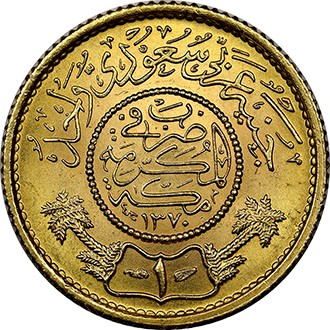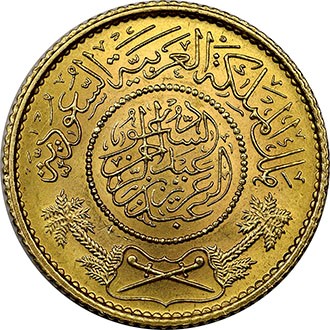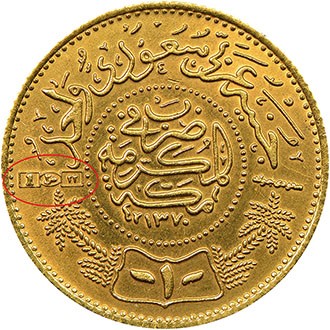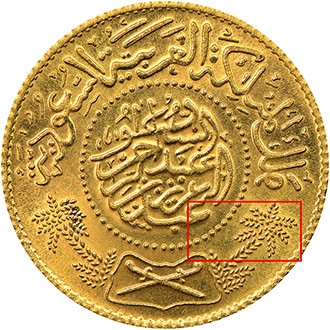Counterfeit Detection: 1950 Saudi Arabia Guinea
Posted on 2/24/2023
Following World War II, the British sovereign issue was popular for trade in the Middle East, even though the British government had all but abandoned the gold coin. High demand and low supply created an incentive for counterfeiters, some of whom argued that it was acceptable to copy a coin that was no longer being struck for circulation. To counter this argument and lower demand, Great Britain resumed sovereign production in 1957.
Saudi Arabia also took steps to address the preference in Middle East commerce for the sovereign, with its iconic images of the British monarch on the obverse and St. George and the Dragon on the reverse. Saudi Arabia struck guinea coins that matched the specifications of the sovereign: 22mm in diameter, with a weight of just under 8g and 0.917-fine gold (22kt). Saudi Arabia guineas bear two Islamic calendar years, AH1370 or AH1377, which correspond to the Western calendar years of 1950 and 1957, respectively.
Saudi Arabia struck about 2 million 1950 guineas, and they remain popular with collectors today. Numismatic Guaranty Company® (NGC®) has certified more than 500 genuine examples, which generally carry a modest numismatic premium that can rise to hundreds of dollars for high-grade examples. But collectors should be wary because this coin made NGC’s list of Top 25 Most Commonly Counterfeited World Coins.
The counterfeit shown here lacks luster, and the design has several glaring problems. The beads along the border and near the center are spaced much farther apart than they are on the genuine example. A look at the trees reveals a similar discrepancy.
The counterfeit also has an extra design element that states (in Arabic) that the coin is 22kt gold. The piece is known to have commercial imitations, which may have been created as jewelry or to sell gold in a standard weight and fineness.
 |
|
 |
|
| The beaded border and trees are spaced far apart on this guinea, and the below Arabic legend does not appear on a genuine coin. | |
Of course, regardless of intent, this particular coin still lacks the numismatic value of an original. If you’re uncertain whether you have a genuine example of a world coin such as a Saudi Arabia guinea, remember that NGC backs its determinations of authenticity and grade with the NGC Guarantee.
Reproduced with permission from the November 2022 edition of The Numismatist, an official publication of the American Numismatic Association.
Did you know? NGC has created a comprehensive Counterfeit Detection resource to help collectors and dealers identify counterfeit and altered coins. Visit NGCcoin.com/counterfeit.
Stay Informed
Want news like this delivered to your inbox once a month? Subscribe to the free NGC eNewsletter today!




